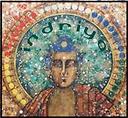pratyahara
Pratyahara ist der fünfte Aspekt der acht Stufen des Ashtanga Yoga oder Raja Yoga (achtgliedriges Yoga), wie dies von Patanjali in einem der ältesten überlieferten Werke über Yoga, dem Yoga-Sutra beschrieben wurde. Es folgt auf das Pranayama (4. Stufe, die Beherrschung des Atems) und führt zum Dharana (6. Stufe, Konzentration) und Dhyana (Meditation). Es geht um die Disziplinierung der Sinne (Indriya, „Fühler“), wie Geschmack, Sehen, Hören, Riechen, Fühlen und des Geistes durch ein Sich-nach-innen-richten.
Durch diese Internalisierung des Bewusstseins sollen Sinneseindrücke allgemein bewusster und kontrollierbarer werden. Durch regelmäßiges Üben wird so die Durchführung weiterer Stufen erleichtert. Es handelt sich aber nicht um eine Beschränkung der Sinne, im Gegenteil soll der Geist zur Wahrnehmung von Feinheiten geschult werden, die den Sinnen sonst verborgen blieben.
Auf fortgeschrittenem Niveau wird auch gelehrt, wie die Aktivität der unwillkürlichen Muskulatur beeinflusst werden kann. Diese Techniken gehen fließend in das Pranayama über. Eine andere Technik des Pratyahara ist die Konzentration auf den Punkt zwischen den Augenbrauen, das Ajna-Chakra (drittes Auge).
The word „pratyahara“ means „removing indriyas from material objects“. Pratyahara is the stage at which an adept learns how to control the „tentacles“ of consciousness that are called „indriyas“ in Sanskrit. This allows him to achieve the ability to see in subtle and the subtlest layers of multidimensional space, as well as to exit of his material body into them and to settle in them, accustoming himself to their subtlety, tenderness and purity.
Concept of indriyas exists only in the Indian spiritual culture. Europeans with their simplified, complicated and degraded religious ideas usually are not capable of grasping this kind of knowledge. Even in translations from Indian languages they substitute the word „indriyas“ with the word „senses“ that has lost its original meaning; by doing this they completely reject the immense methodological significance of pratyahara concept and of principles of work at this stage.
Europeans translate the term „pratyahara“ as „control over the senses“. But senses are not everything that is denoted by the term indriyas, since indriyas include mind as well. It is also essential that the image of „tentacles“ evoked by the word „indriyas“ provides profound understanding of the principles of functioning of the mind and consciousness, as well as of methods of controlling them.
Krishna presented a fundamental knowledge about working with the indriyas in Bhagavad Gita [10]. He was talking about indriyas of sight, hearing, smell, touch, proprioreception and also about those of mind. And indeed: concentration on an object through any sense organ or with mind is very similar to extending a tentacle to it from one’s body. When we switch concentration to another object we detach and move our indriyas to it. In the same manner the mind creates its own indriyas, when we think about something or someone. People with developed sensitivity can perceive other people’s indriyas touching them. In some cases they can even see those indriyas and therefore they can influence them.
Krishna was saying that one of the things that a man should learn is the ability to draw all his indriyas from the material world inwards, just like a tortoise retracts its paws and head into its shell. Then one should extend one’s indriyas into Divine eons in order to embrace God with them, to draw himself to Him and to merge with Him.
One cannot attain control over one’s indriyas without mastering an ability to shift concentration of consciousness between chakras and main meridians, i.e. the meridians that make up „microcosmic orbit“ plus the middle meridian.
Comments are closed.
